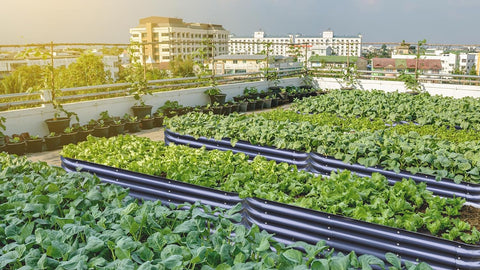Embrace the Blooms: A Guide to Planting Early Summer Bulbs, Corms & Tubers in Your Raised Garden Bed
As the days grow longer and the sun begins to warm the soil, gardeners eagerly anticipate the arrival of early summer blooms. To ensure a garden bursting with color and vitality, consider planting a variety of bulbs, corms, and tubers in your raised garden bed. In this article, we'll explore the benefits of raised garden beding and provide a step-by-step guide on how to plant these delightful additions to your garden.
Benefits of Raised garden beding:
Raised garden beding offers numerous advantages for cultivating bulbs, corms, and tubers. The elevated structure provides better drainage, prevents soil compaction, and allows for easier weed control. Additionally, raised beds warm up faster in the spring, creating an ideal environment for early summer bloomers that thrive in well-drained, warm soil.
Choosing the Right Bulbs, Corms & Tubers:
Before diving into the planting process, it's essential to select the right bulbs, corms, and tubers for your raised garden bed. Popular choices for early summer blooms include dahlias, gladiolus, lilies, and begonias. Ensure you choose varieties that are well-suited to your climate and growing conditions.
Steps for Planting Early Summer Bulbs, Corms & Tubers:
Prepare the Soil:
- Begin by preparing the soil in your raised bed. Mix in well-rotted compost or organic matter to enhance fertility and improve drainage. Raised beds often have superior soil structure, making it easier for these plants to establish their root systems.
Choose the Right Location:
- Select a sunny location for your raised garden bed, as most bulbs, corms, and tubers thrive in full sunlight. Adequate sun exposure ensures robust growth and vibrant blooms.
Planting Depth and Spacing:
- Follow the specific planting guidelines for each type of bulb, corm, or tuber. Generally, a good rule of thumb is to plant them at a depth that is two to three times their diameter. Be mindful of spacing to allow for proper air circulation and prevent overcrowding.
Watering:
- After planting, water the bed thoroughly to settle the soil and initiate the growth process. Maintain consistent moisture, especially during the initial stages of growth. Avoid overwatering to prevent bulb rot, a common issue with waterlogged soil.
Mulch and Fertilize:
- Apply a layer of mulch to help conserve moisture, suppress weeds, and regulate soil temperature. Additionally, feed your plants with a balanced fertilizer to promote healthy foliage and robust blooms.
Staking if Necessary:
- Some taller plants, like gladiolus, may require staking to support their height and prevent bending or breaking. Install stakes at the time of planting to avoid damaging the roots later on.
Monitor and Enjoy:
- Keep a watchful eye on your raised garden bed as the bulbs, corms, and tubers grow and bloom. Regularly deadhead spent flowers to encourage continuous blooming and maintain the bed's overall appearance.
Conclusion:
Planting early summer bulbs, corms, and tubers in your raised garden bed is a rewarding endeavor that promises a tapestry of colors and textures. By following these simple steps, you'll be well on your way to creating a vibrant and flourishing garden that will be the envy of your neighborhood. Embrace the beauty of nature as your raised bed bursts into a symphony of early summer blooms!


